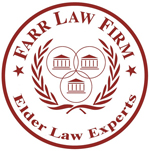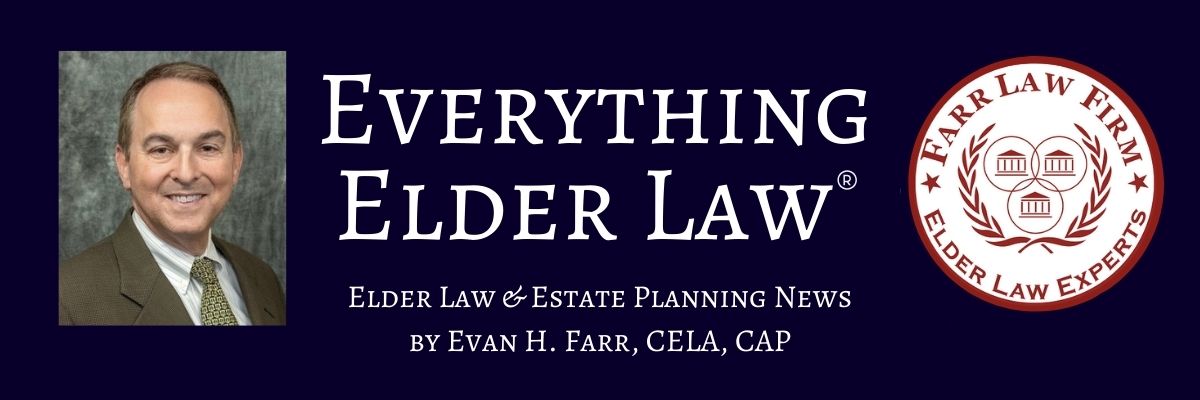 Cal, 70, lives alone in his condominium in Fairfax County. He is a widower who is estranged from his adult children. He has lots of “collections” of items that he says he will never part with because they have sentimental value to him. He doesn’t have people over ever, and his trusted neighbor and closest friend, Marybeth, is afraid that he may be depressed and lonely. His health isn’t the best, and he might need some assistance in the home in the near future. As a good friend who has been his neighbor for 40 years, Marybeth wants to help Cal, but she is not sure how to go about it. She isn’t sure if he is a hoarder or just someone who is very sentimental about his belongings.
Cal, 70, lives alone in his condominium in Fairfax County. He is a widower who is estranged from his adult children. He has lots of “collections” of items that he says he will never part with because they have sentimental value to him. He doesn’t have people over ever, and his trusted neighbor and closest friend, Marybeth, is afraid that he may be depressed and lonely. His health isn’t the best, and he might need some assistance in the home in the near future. As a good friend who has been his neighbor for 40 years, Marybeth wants to help Cal, but she is not sure how to go about it. She isn’t sure if he is a hoarder or just someone who is very sentimental about his belongings.
Mementos from a Life Well Lived
It’s amazing how many things you can acquire over the course of a lifetime. From an endless array of knickknacks to photo albums to linens you haven’t used in years, these aren’t just objects, they’re memories of what makes a house a home. Even if you never use certain items, it can sometimes feel like a loss having to part with them due to the memories attached to them.
For friends or a loved one, such as Marybeth, it can be difficult to watch someone struggle with clutter, especially when they do not see how it is impacting their lives. Those who want to help often feel helpless and overwhelmed. Hoarding, which became a diagnostic entry in the Diagnostic and Statistical Manual of Mental Disorders (DSM-5) in 2013, affects about 2-3 percent of individuals in the United States. People with hoarding disorder have “difficulty parting with possessions, clutter that interferes with normal functioning, and marked distress and impairment.”
Hoarding Is Not the Same as Collecting
Collectors typically acquire possessions in an organized and intentional fashion, whereas acquisition of objects in people who hoard is typically impulsive, with little planning. Objects acquired by people who hoard also lack a consistent theme, where collectors acquire items that are typically focused on a particular topic. For collectors, possessions are usually organized and displayed, where disorganized clutter is a hallmark of hoarding disorder.
Please note that not every person with hoarding symptoms has a hoarding disorder. The Institute for Challenging Disorganization, a 501(c)(3) nonprofit entity, has created the Clutter–Hoarding Scale® with five hoarding levels that rank the severity of the problem. Below is a handy chart created by The Recovery Village.
Click here to view larger image.
The consequences of hoarding include health problems, emotional and mental health issues, and reduced quality of life.
Below are some other signs that an individual may have hoarding behaviors.
- Difficulty letting go of things (throwing away, selling, recycling, giving away).
- Clutter that makes it difficult to move easily throughout the home.
- Piles of items that keep tipping over (newspapers, magazines, mail).
- Sleeping with items on the bed.
- Trouble organizing and categorizing.
- Trouble making decisions.
- Spending time moving things from pile to pile without letting go of items.
- Problems with attention.
- Excessive shopping or collecting of free things.
- Not realizing the seriousness of the problem.
What to Do if a Friend or Loved One Doesn’t Want to Part with Their Stuff
As a friend or family member, your first instinct may be to go in and remove the clutter from your loved one’s home. Because there are strong attachments to the clutter, simply removing it will likely not help. In fact, if a family member just went in and removed the clutter, it would most likely result in disastrous consequences, including feelings of mistrust, alienating the family member, and increasing the family member’s anxiety, and depression. Only changing the amount of acquisitions and decisions to save certain things will keep the clutter manageable.
Here are some things you can do:
- Have a conversation and listen to your loved one and try to understand why they have problems with clutter. For example, letting go of possessions is difficult for a variety of reasons such as sentimentality, aesthetics, or an object’s future usefulness. Those with hoarding behaviors are often very creative individuals who can think of multiple uses for items; however, these ideas rarely materialize, resulting in clutter. More often than not, your loved one can recognize at least one issue (limited space, not being able to have family over, etc.) that makes them unhappy, and that will serve as a good shared starting point.
- Attempts to part with possessions create considerable distress and lead to decisions to save them. Don’t force the conversation if your loved one seems resistant to the idea of parting with items; unless your aging parent or family member has had a recent medical or caregiving issue that could hinder their quality of life, there’s no need to rush into talking about it. Bring the topic up again at a later date if it causes distress, potentially with additional support from family or friends. It shouldn’t feel like an intervention or anyone trying to make decisions for your loved one but instead as a way to genuinely want to help figure out a positive solution to their living situation.
- If your friend or loved one is completely resistant to all efforts to help, gently suggest that he or she consider seeking treatment if they have a hoarding disorder. Hoarding disorder can be treated and there is hope for returning to a normal life. According to the Recovery Village, “regardless of whether treatment is voluntary or the result of guardians making decisions on a hoarder’s behalf, therapy is typically needed to help people process the reasons behind their emotional connection to items. A specific type of therapy called cognitive-behavioral therapy can reduce the severity of hoarding. Certain medications may also be beneficial.” Typically, individuals will continue to face challenges throughout their lives; staying in treatment may decrease chances that hoarding symptoms and clutter will return. There are multiple types of help for individuals with hoarding disorder, including self-help books, support groups, individual talk therapy, medications, and group therapy. Emerging evidence supports peer-facilitated group treatments.
By approaching hoarding with patience and compassion, you can help your loved one recover and live a more normal life with less clutter.
When It’s Not Hoarding, Tips for Downsizing and Decluttering
If your friend or loved one doesn’t have a hoarding disorder but has lots of clutter in their home that they are willing to part with, these are some questions they should ask themselves to help them decide what to keep and what to get rid of:
- Do I need it or want it?
If you have a pasta maker that’s been sitting in the cabinet untouched for years, don’t feel like you “should” keep it just because it was a Christmas gift from your favorite aunt. Think realistically about the years ahead: will you use it more than a few times? Are you genuinely excited for the few times you’ll use it? Will it make an important difference in your life to hold onto the item? It’s okay to say yes, but it is also okay to decide you don’t need it. Decluttering and downsizing is about simplifying, so make a decision and feel confident in sticking to it.
- Does it have sentimental value?
The hardest items to part with will be the ones directly tied to beloved memories with your family and friends. Still, if you kept everything of sentimental value, decluttering and downsizing would be impossible. Go through your things with a friend or loved one, and talk about them and the memories they conjure up; use the Legacy Stories app to take pictures to tell some of the stories associated with them.
- Do I use this item often?
There are going to be some items you’re simply used to having around, but that you don’t use very much. Think about your day-to-day routine: which items do you use the most? Continue to be realistic about the future, keeping in mind that there might be someone else who would get much more use out of the item than you might or a charity you can donate it to.
- Do I have another item that performs the same function?
Whether it’s a handheld mixer and a stand-alone version of the same thing or 10 rain jackets and winter coats, duplicate items are the easiest way to declutter and downsize. Choose the newest or best-functioning electronics and a reasonable amount of more practical items such as towels, blankets, outerwear, and other clothing. Take the opportunity to clean out your closet and to minimize duplicate items, only keeping one or two of each thing. If you need help, hire a professional organizer, who can make a world of difference during this process and make downsizing and organizing your items simpler. See our Trusted Referrals for some local professionals who can help.
Downsizing or Helping a Loved One Downsize or Declutter? Make Sure Your Planning Documents Are in Place!
At the Farr Law Firm, we help families plan for themselves and their loved ones. With advance planning, each person, regardless of their family situation, can retain the income and assets it has taken a lifetime to accumulate and the peace of mind that their needs and their child(ren)’s needs will be adequately and properly addressed. If you or members of your family have not done Incapacity Planning or Estate Planning, or if a loved one is beginning to need more care than you can handle, please contact us to make an appointment for an initial consultation:
Fairfax Estate Planning: 703-691-1888
Fredericksburg Estate Planning: 540-479-1435
Rockville Estate Planning: 301-519-8041
DC Estate Planning: 202-587-2797















Leave a comment
You must be logged in to post a comment.